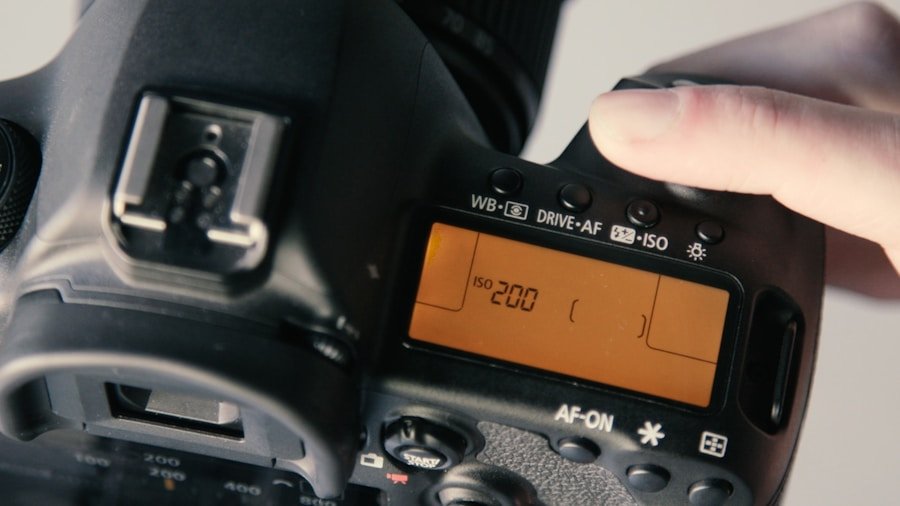Understanding your camera settings is crucial to capturing the best possible photographs. One of the most important settings to understand is the aperture, which controls the amount of light that enters the camera. A wider aperture (lower f-stop number) allows more light to enter, which is great for low-light situations or creating a shallow depth of field. On the other hand, a smaller aperture (higher f-stop number) allows less light to enter, which is ideal for capturing landscapes or other scenes where you want everything in focus.
Another important setting to understand is the shutter speed, which controls how long the camera’s shutter remains open. A faster shutter speed is great for freezing motion, while a slower shutter speed can create a sense of motion in your photographs. Additionally, understanding ISO is important, as it controls the camera’s sensitivity to light. A lower ISO is ideal for bright conditions, while a higher ISO is better for low-light situations.
Mastering Composition and Framing
Mastering composition and framing is essential for creating visually appealing photographs. One of the most common composition techniques is the rule of thirds, which involves dividing the frame into nine equal parts using two horizontal and two vertical lines. Placing key elements of your photograph along these lines or at their intersections can create a more balanced and visually interesting image.
Another important aspect of composition is leading lines, which are lines within the photograph that lead the viewer’s eye to a specific point of interest. Utilizing leading lines can help guide the viewer’s gaze and create a sense of depth in your photographs. Additionally, framing your subject within the natural surroundings can add context and visual interest to your images.
Utilizing Natural Light
Utilizing natural light is essential for capturing beautiful and natural-looking photographs. Understanding the quality of light at different times of day can help you make the most of natural light. For example, the golden hour, which occurs during the first and last hour of sunlight, provides soft, warm light that is ideal for creating stunning portraits and landscapes.
Additionally, understanding how to use natural light to your advantage can help you avoid harsh shadows and overexposed areas in your photographs. Utilizing diffusers or reflectors can help soften harsh light and create more flattering portraits. Understanding how to position your subject in relation to the light source can also help you create more dynamic and visually appealing photographs.
Using the Rule of Thirds
Using the rule of thirds is a fundamental composition technique that can help you create more visually appealing photographs. The rule of thirds involves dividing the frame into nine equal parts using two horizontal and two vertical lines. Placing key elements of your photograph along these lines or at their intersections can create a more balanced and visually interesting image.
In addition to placing key elements along the rule of thirds grid, you can also use the rule of thirds to create a sense of movement and flow in your photographs. Placing your subject off-center can create a more dynamic composition and draw the viewer’s eye through the image. Additionally, using the rule of thirds can help you avoid placing your subject directly in the center of the frame, which can create a more visually interesting photograph.
Exploring Different Angles and Perspectives
Exploring different angles and perspectives can help you create more dynamic and visually interesting photographs. Instead of shooting from eye level, try getting down low or shooting from a higher vantage point to create a unique perspective. Changing your shooting angle can help you capture scenes from a fresh and unexpected point of view.
Additionally, experimenting with different focal lengths can help you explore different perspectives within the same scene. Using a wide-angle lens can help you capture more of the scene and create a sense of depth, while using a telephoto lens can help you isolate specific elements within the frame. By exploring different angles and perspectives, you can create more visually compelling photographs that stand out from the crowd.
Experimenting with Shutter Speed and Aperture
Experimenting with shutter speed and aperture can help you create more creative and visually interesting photographs. By adjusting your shutter speed, you can control how motion is captured in your photographs. A faster shutter speed can freeze motion, while a slower shutter speed can create a sense of movement and blur in your images.
Similarly, experimenting with aperture can help you control the depth of field in your photographs. A wider aperture (lower f-stop number) creates a shallow depth of field, which is great for isolating your subject from the background. On the other hand, a smaller aperture (higher f-stop number) creates a deeper depth of field, which is ideal for capturing landscapes or other scenes where you want everything in focus.
Post-Processing and Editing Techniques
Post-processing and editing techniques are essential for enhancing and refining your photographs. Whether you’re shooting in RAW or JPEG format, post-processing allows you to adjust exposure, contrast, color balance, and other aspects of your images to achieve your desired look.
One important aspect of post-processing is understanding how to use layers and masks to selectively edit specific areas of your photograph. This allows you to make targeted adjustments without affecting the entire image. Additionally, understanding how to use tools like curves, levels, and selective color adjustments can help you fine-tune your images and bring out their full potential.
In conclusion, understanding your camera settings, mastering composition and framing, utilizing natural light, using the rule of thirds, exploring different angles and perspectives, experimenting with shutter speed and aperture, and post-processing and editing techniques are all essential skills for creating stunning photographs. By honing these skills and techniques, you can take your photography to the next level and capture images that truly stand out. Whether you’re a beginner or an experienced photographer, there’s always room to grow and improve your craft. So grab your camera, get out there, and start capturing beautiful moments!








